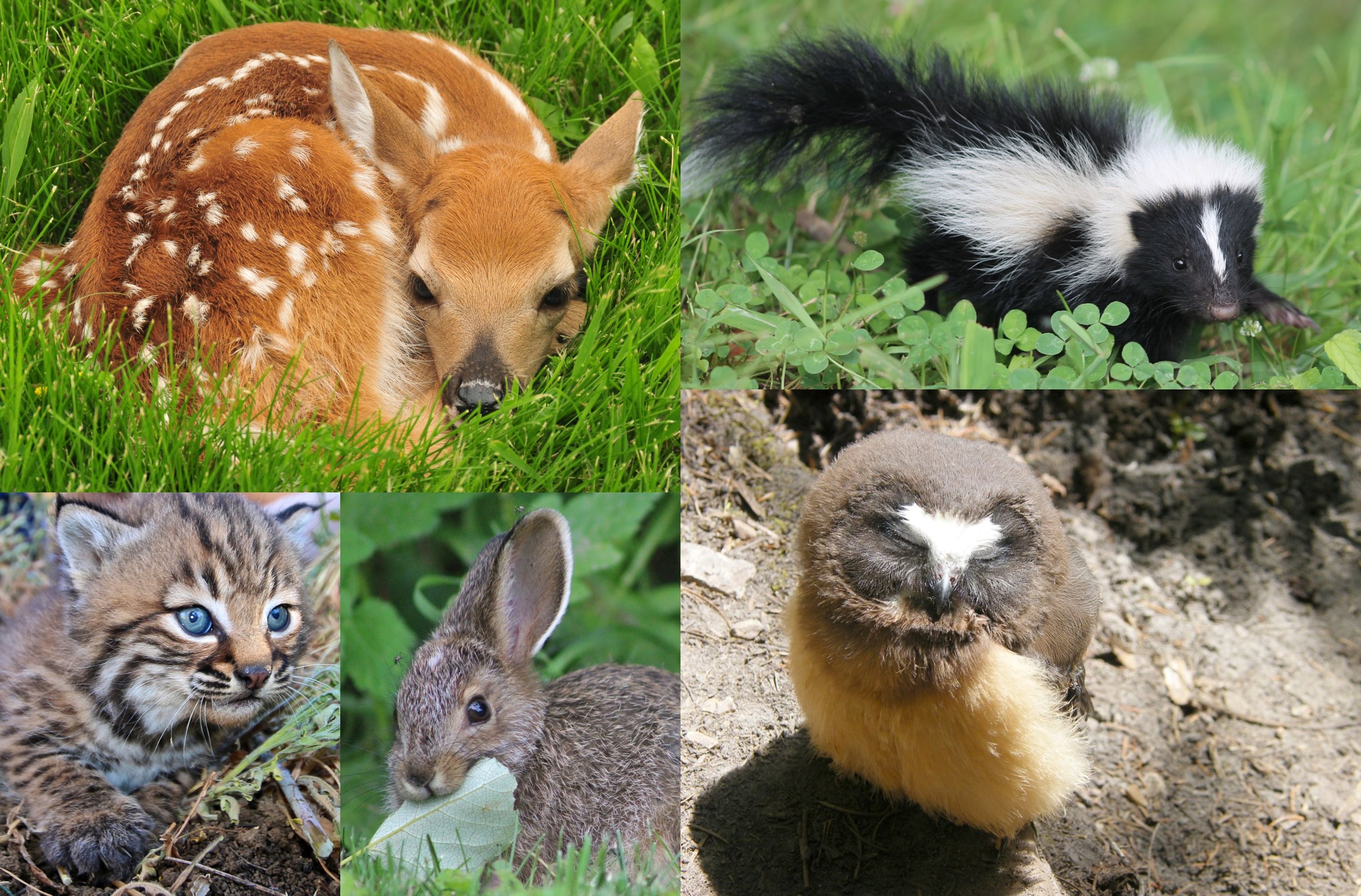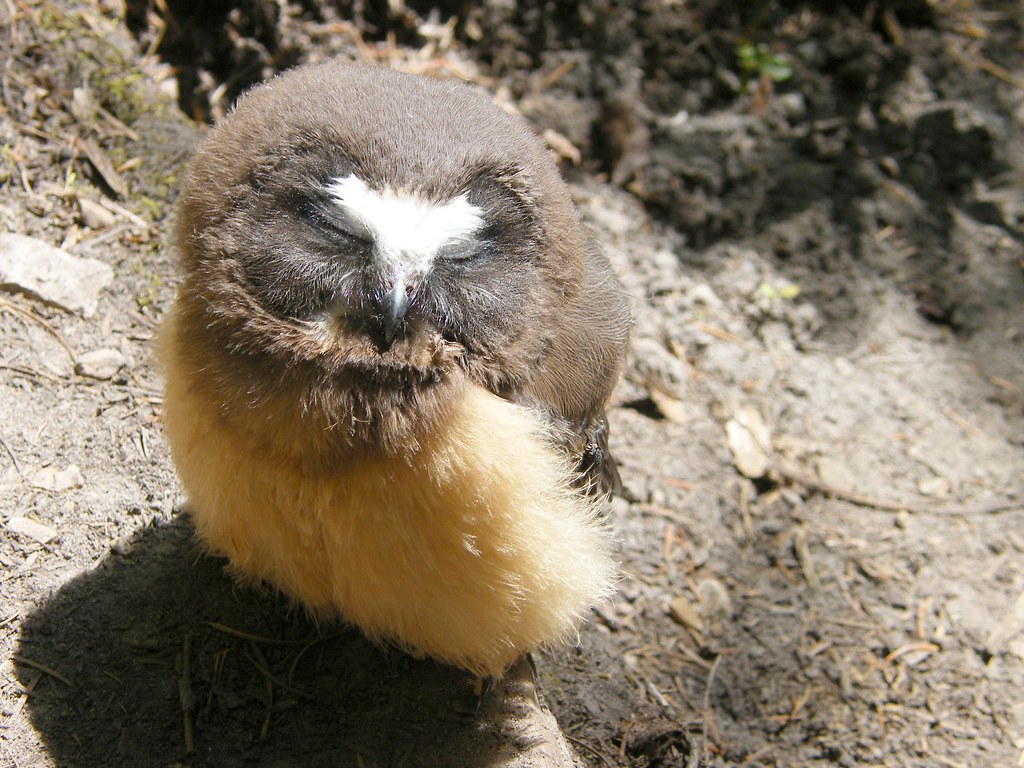Often the animals we see while we are out on nature walks or driving down the highway are full grown adults. Do you ever wonder what these animals looked like when they were babies? Everything seems cuter when it is still young and tiny! This blog showcases five of our favourite baby animals that can be found in Alberta to show you what these animals look like before adulthood.
Skunk by Kevin VanGorden (CC BY-SA 2.0), Northern Saw-Whet Owl by Peter Stevens (CC BY-SA 2.0), White-Tailed Deer by USFWS Mountain-Prairie (CC BY 2.0), Snowshoe Hare by Patti Peterson.
Skunk (Mephitis mephitis)
The colouration of a skunk is to indicate to other animals, including humans, that they want to be left alone. Their infamous spray contains many sulphurous compounds which is why it has such a pungent smell. Generally people want to avoid skunks for this reason, but when they are babies, skunks are pretty darn cute. Baby skunks are usually born in litters of 5 or 6 in early May. They are born altricial, which means are basically helpless at birth and need to be taken care of by the parents for several weeks before they can survive on their own.
Photo by Kevin VanGorden (CC BY-SA 2.0)
Northern Saw-Whet Owl (Aegolius acadicus)
Northern Saw-Whet Owls are one of the smallest owls in Alberta, and it is more common to hear them than see them. These owls nest in tree cavities created by other creatures, such as woodpeckers. As adults, Northern Saw-Whet Owls are darker speckled brown and white in colour, but as babies, Saw-Whets have solid tan-coloured bellies, a dark brown head, and a white forehead. Mother owls lay between 4 and 6 eggs at a time, usually in early spring, and they hatch about a month later.
Photo by Peter Stevens (CC BY-SA 2.0)
White-Tailed Deer (Odocoileus virginianus)
White-Tailed Deer are very common in Alberta, spotted in forests, farmlands, along roadways, and in open meadows. Baby deer, or fawns, have lots of white spots on their backs until they mature. Sometimes, people encounter fawns laying in tall grass with no sign of the mother nearby. This is normal! Do not try to move the fawn to help it find its mother. The mother leaves its young alone in the long grass for most of the day on purpose, as to not attract predators to the baby. She will make occasional visits back to the fawn to feed it throughout the day. Mother deer will have their babies in early summer, and usually have between one and three fawns each year. Fawns are quite dependent on their mother for the first few months of their life, but after that, they may start to fend for themselves.
Photo by USFWS Mountain-Prairie (CC BY 2.0)
Snowshoe Hare (Lepus americanus)
Snowshoe Hares get their name from the adaptation they have to living in snowy conditions. Their hind feet are very large and act like snowshoes to prevent them from sinking into the snow. The gestation period of a snowshoe hare is approximately a month long, and mother hares have a litter usually ranging between 3 and 7 babies. Mother hares can have up to three litters in one year! Snowshoe Hare babies are born with their eyes open and covered in fur and can start fending for themselves a few days after they are born, meaning they are precocial.
Photo by Patti Peterson
Bobcat (Lynx rufus)
Bobcats are very elusive creatures. They are the smallest of the wild cats in Alberta and have a distinctive spotted pattern. These cats are mostly seen in southern Alberta. Bobcats breed in early spring and give birth to a litter of up to six kittens about two months later. Bobcat kittens are born with their eyes closed and open about a week later. Although their eyes are open and they can start to do things on their own, Bobcat kittens stay with their mothers for multiple months after birth. While these kittens are very cute, keep in mind that they are wild animals and should be left alone.
Remember, if you find a baby animal on its own with no mother, that is usually not a problem! Mother deer, for example, leave their fawns alone in the grass for most of the day but still stay nearby to avoid attracting predators. So, unless you are absolutely certain that a baby animal is unsafe or in danger, do not try to move or help the animal. They are more than likely not in danger.






